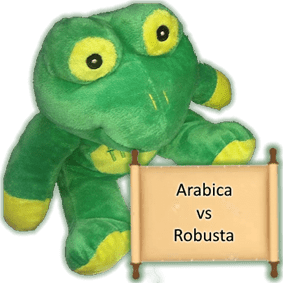The Mpenjati coffee farm is about a two-hour drive from Durban, down the South Coast of Natal. We have visited a farm in this region before, and you can read about it here…
Des, Leigh, their two daughters and son live near the coffee farm, on another farm where they run a coffee shop and also process the farm’s coffee. Des and Leigh are very hospitable, and it was an enlightening visit.
As far as we know, there is a no bigger coffee farm in South Africa, and we are excited to get access to the new crop they are busy with as you read these words (assuming you read them in Apr 2022).
As you can see in the picture, we were up early to join Des and his son Zach on his morning visit to the farm, as you can see in the picture with Zach holding Frog Quaffer in the Sunrise.
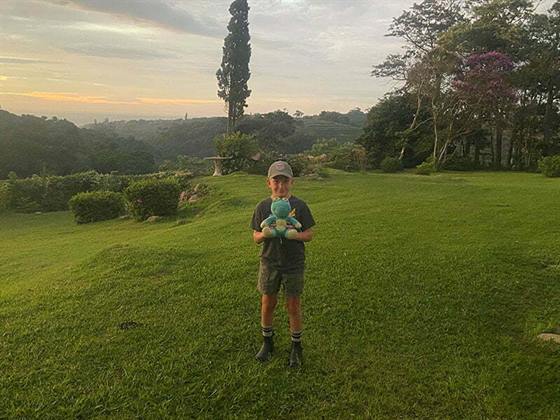
At the farm
From Des and Leigh’s place, the Mpenjati coffee farm is a short drive. On the way, we were greeted by several locals calling him his colloquial name “amaGuava”. The name “amaGauva” was given to him as a kid thanks to the fact that he was always eating Guavas.
Des leases the farmland from a local church that owns a large portion of land, including where the congregation and church are located. Explaining the extent of the farm is hard in words, but it is large. A stream that divides the hills of the farm and the Mpenjati river is at its border. There is also some “wild” vegetation that grows in between the coffee, even the occasional Guava tree.
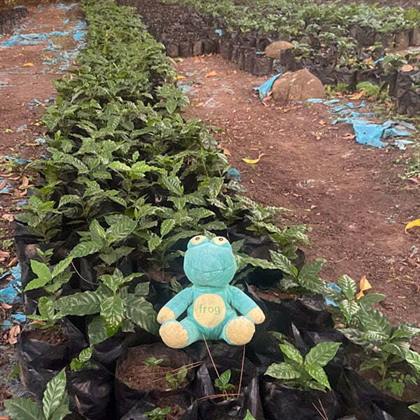

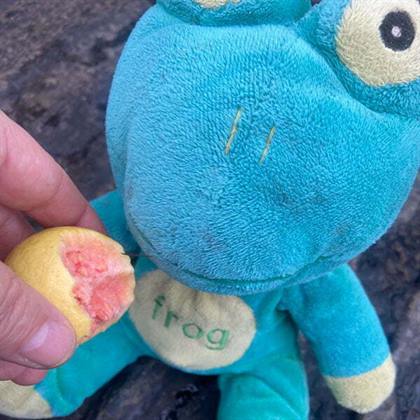
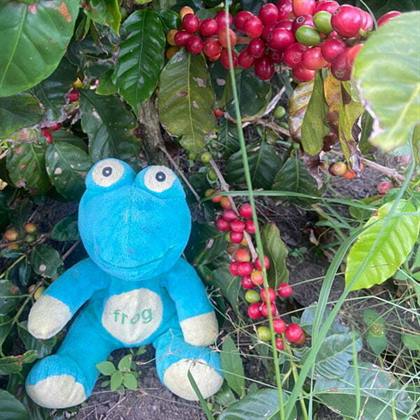
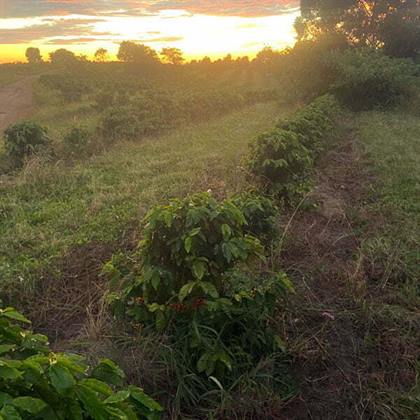
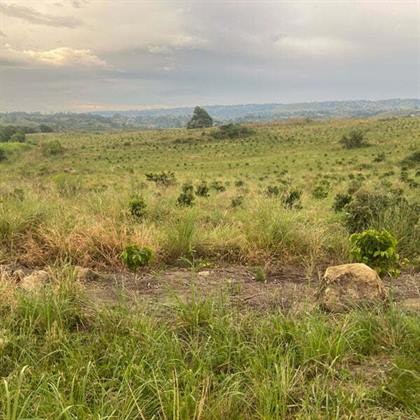
Farm facts
A few facts about the farm:
- The farm is over 130 ha and is leased from the church
- 55 ha of the farm now have coffee.
- A total of 77000 trees have been planted
- Arabica varieties planted Catuai, F6 (not sure the actual parent), Colombia, Costa Rica, Butian, Munster (a variety Des was given that we found near Munster, probably from the original coffee farms in the area from the 70s), Sl28 and K7.
- Other varieties are; Rasmosa (a South African coffee variety) and Robusta
- Des has so far been able to get 1 tonne of green coffee per 6 tonnes of cherry (so that is about the industry average)
- Trees are planted 4mx1.5m giving around 1650 trees per ha and allowing a space for a tractor between rows. As a result, the coffee trees have more space than usual.
- He has been affected by a few fungi and insect pests as well as a soil pest which means he has lost a proportion of this year’s crop
- Each section of the farm has a particular variety so that they can be separated into section and lot sizes. The coffees are picked per lot.
Coffee Processing
Besides the farm, Des has invested in the processing of the coffee. He has a floating bath to float cherries and a single-disc de-pulper for getting to the coffee pip. Next to the de-pulper is his fermentation tanks, where the coffees are fermented. Near the tanks are traditional raised beds used to dry the coffee. He currently does natural, red, yellow honey and washed processed coffee (see more about processing here…).
He does cascara on some drying tables (the dried fruit); this may be interesting for Racemosa since we have had some great cascara from Racemosa coffee. He has also set up some experimental processing too; like anaerobic washed and natural.
The raised beds are never layered too deep and are covered at night or when it rains. Typically, the coffees dry within 21 days, sometimes slightly longer for naturals and some kinds of honey. We did not get too in-depth with the experimental coffees, as I am a little over these. We want to taste the coffee, not the process.
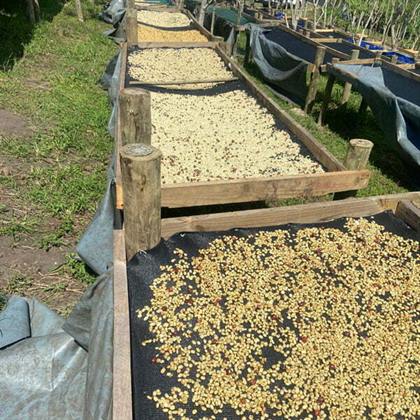
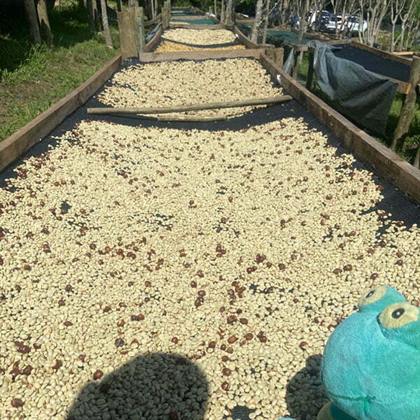
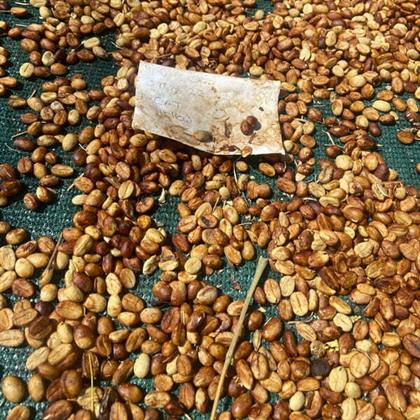
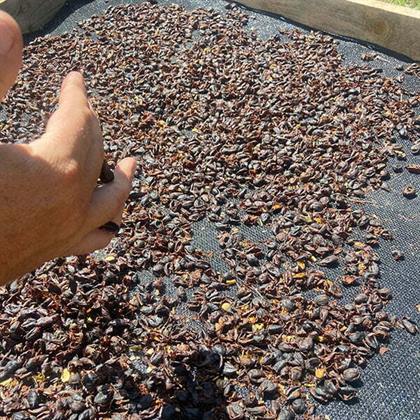
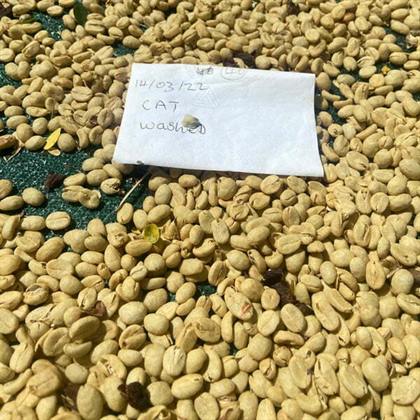
Milling and sorting
Des also has his own milling section. Here coffees that are dried are cleaned, hulled and sorted. Des has invested in one of the cutest gravity tables we have ever seen. The gravity table helps remove foreign matter and ensures the heaviest beans are separated from the lighter ones. Typically, more dense coffees are heavier. Denser coffees produce a better cup since they are more consistent in absorbing and transferring heat, making their ability to be roasted lighter a higher possibility.
After the gravity table is Des’ custom-built grading table. This horizontal shaking bed isolates the smaller beans first, assisting in identifying coffees of a screen 15 or above. A screen 15 coffee is typically the minimum starting point for specialty coffee.
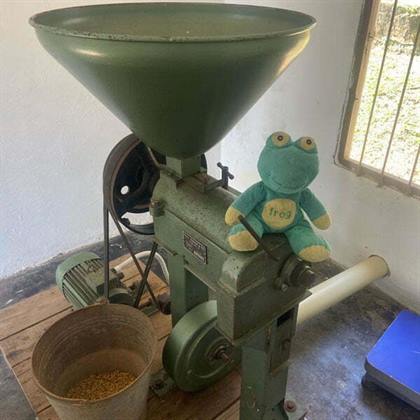
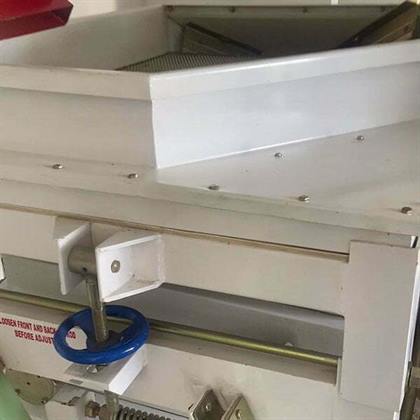
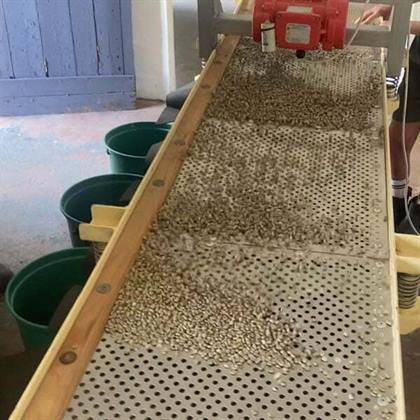
Roasting
Des has his own roaster on the farm, that he uses to roast for the coffee shop on the farm, and assess the quality of his own coffee.
Summary
Mpenjati is a marvellous farm to visit. It is obvious that Des is a man of the earth and was born into farming and is a natural farmer. We are looking forward to offering more of his coffee as soon as we can get some.
If you are ever on the South coast, pop in say hi. Des told us that one of our customer’s has already visited, after tasting the first offering we had last year.

